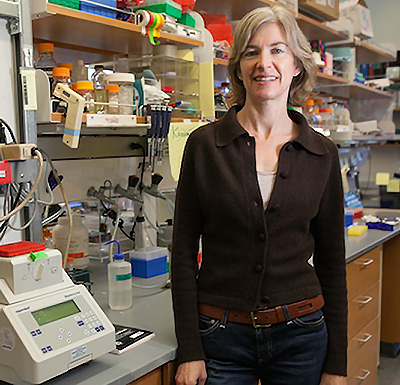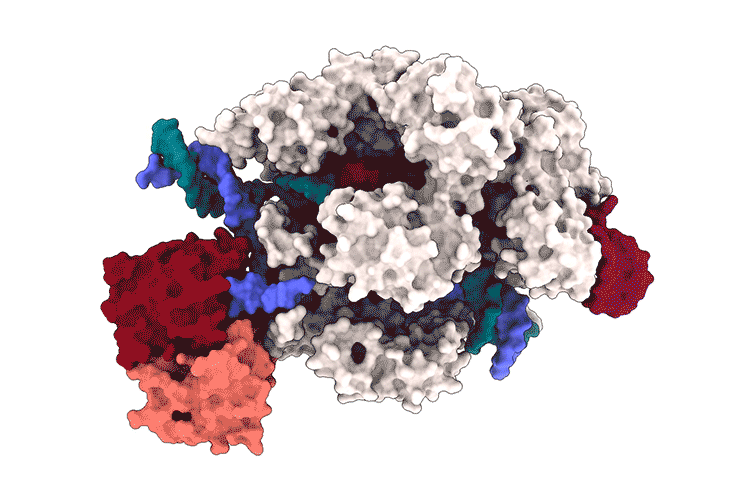Being able to study the 3D-structure of a CRISPR base editor could help refine the entire CRISPR system, says lead study author Jennifer Doudna, PhD
Molecular biology laboratories engaged in CRISPR gene editing will be interested to note that researchers at the University of California Berkeley (UC Berkeley) have created for the first time a three-dimensional (3D) view of the molecular structure of a base editor for CRISPR-Cas9. This breakthrough may lead to new, more accurate gene-editing tools for biomedical research and gene therapy.
Clinical laboratories involved in genetic testing may find this welcomed news, after a pair of studies conducted in 2019 raised concerns about CRISPR base editing. The researchers of those studies observed that it “causes a high number of unpredictable mutations in mouse embryos and rice,” Chemical and Engineering News (C&EN) reported, adding, “Other groups have raised concerns about off-target mutations caused when the traditional CRISPR-Cas9 form of gene editing cuts DNA at a location that it wasn’t supposed to touch. The results of the new studies are surprising, however, because scientists have lauded base editors as one of the most precise forms of gene editing yet.”
Dark Daily covered similar study findings by Massachusetts General Hospital (MGH) in “Researchers at Massachusetts General Hospital Identify Ways That CRISPR DNA Base Editors Sometimes Unintentionally Alter RNA,” May 31, 2019.
Nevertheless, UC Berkeley’s latest breakthrough is expected to drive development of new and more accurate CRISPR-Cas genome-editing tools, which consist of base editors as well as nucleases, transposases, recombinases, and prime editors.
The UC researchers published their findings in the journal Science, titled, “DNA Capture by a CRISPR-Cas9–Guided Adenine Base Editor.”
Understanding CRISPR Base Editors At a ‘Deeper Level’
Harvard University Chemistry and Chemical Biology Professor David Liu, PhD, who co-authored the study, explained the significance of this latest discovery.
“While base editors are now widely used to introduce precise changes in organisms ranging from bacteria to plants to primates, no one has previously observed the three-dimensional molecular structure of a base editor,” he said in a UC Berkeley news release. “This collaborative project reveals the beautiful molecular structure of a state-of-the-art highly-active base editor—ABE8e—caught in the act of engaging a target DNA site.”

Jennifer Doudna, PhD, UC Berkeley Professor, Howard Hughes Medical Institute Investigator, and senior author of the study, has been a leading figure in the development of CRISPR-Cas9 gene editing. In 2012, Doudna and Emmanuelle Charpentier, PhD, Founding, Scientific and Managing Director at Max Planck Unit for the Science of Pathogens in Berlin, led a team of researchers who “determined how a bacterial immune system known as CRISPR-Cas9 is able to cut DNA, and then engineered CRISPR-Cas9 to be used as a powerful gene editing technology.” In a 2017 news release, UC Berkeley noted that the work has been described as the “scientific breakthrough of the century.”
Viewing the Base Editor’s 3D Shape
CRISPR-Cas9 gene editing allows scientists to permanently edit the genetic information of any organism, including human cells, and has been used in agriculture as well as medicine. A base editor is a tool that manipulates a gene by binding to DNA and replacing one nucleotide with another.
According to the recent UC Berkeley news release, the research team used a “high-powered imaging technique called cryo-electron microscopy” to reveal the base editor’s 3D shape.
Genetic Engineering and Biotechnology News notes that, “The high-resolution structure is of ABE8e bound to DNA, in which the target adenine is replaced with an analog designed to trap the catalytic conformation. The structure, together with kinetic data comparing ABE8e to earlier ABEs [adenine base editors], explains how ABE8e edits DNA bases and could inform future base-editor design.”

Knowing the Cas9 fusion protein’s 3D structure may help eliminate unintended off-target effects on RNA, extending beyond the targeted DNA. However, until now, scientists have been hampered by their inability to understand the base editor’s structure.
“If you really want to design truly specific fusion protein, you have to find a way to make the catalytic domain more a part of Cas9, so that it would sense when Cas9 is on the correct target and only then get activated, instead of being active all the time,” study co-first author Audrone Lapinaite, PhD, said in the news release. At the time of the study, Lapinaite was a postdoctoral fellow at UC Berkeley. She is now an assistant professor at Arizona State University.
“As a structural biologist, I really want to look at a molecule and think about ways to rationally improve it. This structure and accompanying biochemistry really give us that power,” added UC Berkeley postdoctoral fellow Gavin Knott, PhD, another study co-author. “We can now make rational predications for how this system will behave in a cell, because we can see it and predict how it’s going to break or predict ways to make it better.”
Clinical laboratory leaders and pathologists will want to monitor these new advances in CRISPR technology. Each breakthrough has the power to fuel development of cost-effective, rapid point-of-care diagnostics.
—Andrea Downing Peck
Related Information:
New Understanding of Crispr-Cas9 Tool Could Improve Gene Editing
DNA Capture by a CRISPR-Cas9-Guided Adenine Base Editor
CRISPR Base Editors Cause Unexpected Mutations



